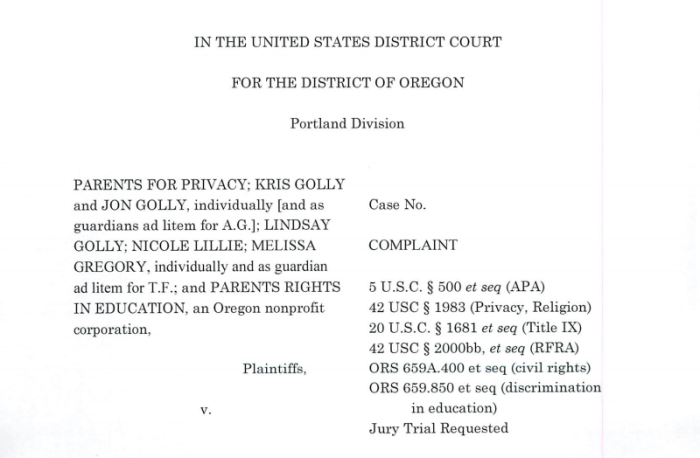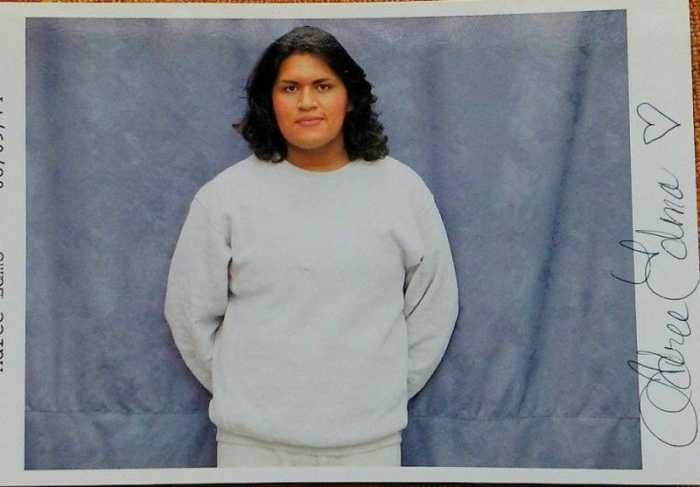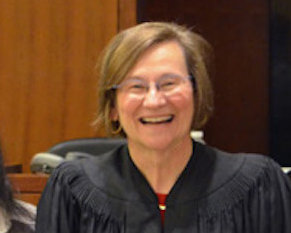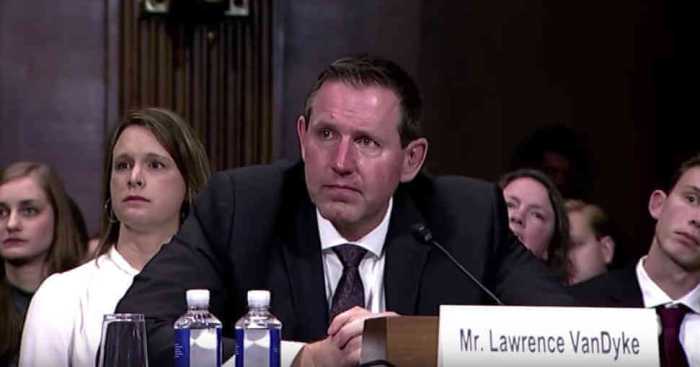The San Francisco-based Ninth Circuit Court of Appeals panel that heard oral arguments on September 8 in several marriage equality cases appeared very dubious about the justifications presented in defense of the Nevada and Idaho bans on same-sex couples marrying.
The outcome of these appeals seems almost pre-ordained at this point. Two of the panel’s judges –– Stephen Reinhardt and Marsha Berzon –– made up the majority of a circuit panel that ruled in January that sexual orientation discrimination claims merit heightened scrutiny. That standard of judicial review thrusts the burden on the state to show that a policy under challenge significantly advances an important governmental interest. Most observers agree that applying such a standard to marriage bans makes them unlikely to survive.
Reinhardt also wrote the Ninth Circuit opinion that struck down California’s Proposition 8 in 2012.
The panel’s third judge, Ronald Gould, was on a panel that issued what could be characterized as a pro-gay ruling in a pre-repeal challenge to the military’s Don’t Ask, Don’t Tell policy.
Berzon and Gould were appointed to the court by President Bill Clinton; Reinhardt by Jimmy Carter.
The Idaho and Nevada bans were both defended by the same attorney, Monte Stewart, who founded the Marriage Law Foundation, a non-profit group that works to block marriage equality advances. Stewart’s argument was essentially the same for both cases –– during the Nevada argument, in fact, he stumbled and referred to his client as Idaho –– but the different circumstances presented by the two states required some fancy footwork on his part.
The essential thrust of both defenses was that the definition of marriage plays an important function in “messaging” to society the state’s policy preferences and the conduct it wants to encourage. It is in the state’s interest, he argued, to promote understanding of how valuable it is to children born to heterosexual couples that their parents be married so they can be raised in a stable household with both a mother and a father. He repeatedly referred to a “child’s bonding right,” defined as the right of a child to bond with both of their biological parents. Stewart professed particular concern about children, particularly boys, being raised by single mothers.
During the Nevada argument, Gould challenged Stewart to explain the “derivation” of this right and where it is based in the Constitution, and he was forced to admit he had invented the term as shorthand for his messaging argument.
Describing the consequence of a marriage equality policy as “genderless marriage,” Stewart argued that sends a message that gender doesn’t matter and that it is not important to children’s welfare that they bond with parents of both sexes. Effectively acknowledging his argument rested entirely on speculation, he referred to the state’s “crystal ball” in foreseeing harmful consequences for future generations if official policy endorsement of traditional marriage were abandoned. State legislatures, he asserted, have the prerogative and traditional role of determining such policy choices.
Stewart was confronted by Berzon, the panel’s most persistently engaged questioner, and then by Reinhardt to show how allowing or recognizing same-sex marriages would cause the increase in “fatherlessness” he insisted the states had a compelling interest to prevent. He fell back on a federalism argument, though he didn’t use that word. He referred to the portion of Supreme Court Justice Anthony Kennedy’s opinion in the 2013 Defense of Marriage Act case in which he went on at length about the traditional role of the states in deciding who could marry.
There are important differences between Nevada and Idaho. In Idaho, a broad constitutional amendment bans not only same-sex marriage but also civil unions and domestic partnerships. By contrast, Nevada has a narrower marriage amendment as well as a broad domestic partnership law under which same-sex couples have virtually the same rights as different-sex couples concerning parenting and relationships with children. Stewart’s difficulty came in explaining how his “messaging” argument fares regarding a state that has undermined that message with a marriage-light approach, which confers the very rights Stewart said it is essential for marriage to deliver to different-sex couples exclusively.
It’s hard to escape the suspicion the panel will find the inconsistencies overwhelming.
Deborah Ferguson, a former assistant US attorney now in private practice, argued for the Idaho plaintiffs, while Tara Borelli, a staff attorney at Lambda Legal, argued the Nevada case. Ferguson was defending a pro-marriage-equality ruling issued in May by the federal district court in Idaho, while Borelli was appealing an adverse ruling the district court in Nevada issued in 2012, a year before the Supreme Court DOMA decision. Even though Stewart tried to craft an argument that seemed somehow new or different from the arguments that have now been rejected by the 10th, Fourth, and Seventh Circuit Courts, he was clearly straining.
From their questions, it appeared the judges were most concerned with how they would shape their ruling for the plaintiffs rather then whether they would find for them. The other three circuits that have so far ruled reached the same results but followed different legal paths to get there.
The Fourth Circuit ruling in the Virginia case and the 10th Circuit rulings on Utah and Oklahoma treated them as fundamental rights cases, finding the states failed to present a compelling argument for depriving same-sex couples of access to the fundamental right to marry. Those rulings avoided the question of what level of judicial scrutiny to apply to an anti-gay state policy.
The recent Seventh Circuit rulings on Indiana and Wisconsin, by contrast, signaled concern –– voiced during oral arguments –– about how to make the case for a fundamental marriage right without endangering laws against polygamy and incest. There, the court followed the equal protection route, finding that neither state had provided any rational basis for a policy that discriminates against a group of people defined by an immutable characteristic –– sexual orientation –– and that has been the target of severe social and governmental hostility. Judge Richard Posner, in his opinion for the Seventh Circuit panel, employed his trademark economic analysis to contrast the harms inflicted by the marriage ban with the minimal, if any, benefits to society or the state from banning same-sex marriage.
Reinhardt asked Ferguson whether the plaintiffs cared which legal argument the court used, so long as the plaintiffs won. Ferguson had the wit to give the shortest possible answer: “No,” which triggered a wave of laughter in the courtroom. She quickly followed up, however, by contending that the fundamental right and equal protection arguments were “both important and related” and were both “squarely presented to the court” in this case. She urged the panel to rule on both grounds.
Stewart attempted to maneuver around one big roadblock –– the Ninth Circuit’s precedent that anti-gay discrimination claims be subjected to heightened scrutiny, making it very difficult to defend a same-sex marriage ban –– by arguing it was not relevant to this case. Idaho and Nevada adopted their marriage bans, he asserted, not out of anti-gay bias or animus but because the states wanted to incentivize heterosexual couples to marry if they intended to raise children and feared that allowing same-sex marriage would send the “wrong” message to such couples, devaluing the importance of “man-woman” marriage. In contrast, the DOMA ruling –– on which the Ninth Circuit has since established its heightened scrutiny precedent –– rested on Justice Kennedy’s finding that the 1996 federal statute was based in anti-gay animus on Congress’ part.
The marriage amendment campaigns of the past two decades, of course, exhibited considerable anti-gay motivation, but, with the exceptions of Judge Vaughn Walker’s district court ruling in the Proposition 8 case and Judge Posner’s opinion for the Seventh Circuit, the federal courts have generally been loath to attribute animus to voters who supported them. Borelli noted in her argument that the justifications for Nevada’s ban were notably absent from its legislative history, having apparently been manufactured after the fact for purposes of litigation. If heightened scrutiny applies, the court is not supposed to consider such post-hoc rationalizations.
Judge Berzon said that she was “mystified” that courts deciding marriage equality cases have not focused on the issue of sex discrimination. In its 1967 ruling on interracial marriage, the Supreme Court rejected a key defense of miscegenation laws –– that they were not racially discriminatory since both blacks and whites were equally barred from marrying into the other race. Similarly, Berzon, should she write the majority opinion here, might include discussion of the fact that even though men and women are both barred from marrying someone of their own gender under same-sex marriage bans, such bans nevertheless discriminate on the basis of sex. Such a conclusion would likely come in addition to a theory of the case based on fundamental rights or on an equal protection analysis of sexual orientation discrimination –– or both.
An exchange between Reinhardt and Stewart was a reminder of why the specific rationale the Ninth Circuit settles on is not going to be the last word. When Stewart made his federalism argument by pointing to Justice Kennedy’s reference in DOMA to the traditional role played by states in determining marriage policy, Reinhardt responded, “You’ll have an opportunity to find out what Justice Kennedy really thinks. Your speculation is as good as ours.” The attorney then said, “We all know this will be decided one step up,” to which Reinhardt replied, “And we know by whom.” That last was an acknowledgment of the nearly universal belief that Kennedy will be the deciding vote on the issue.
The Supreme Court has indicated that at its first conference of the new term, on September 29, it may discuss the cases from all five of the states where appellate rulings have been made –– Utah, Oklahoma, Virginia, Indiana, and Wisconsin. Though there is no certainty that day's conference will actually get to these cases, if they do we may know very soon whether the high court will take up marriage equality in the term that runs through June 2015. With the appellate court count three for three in terms of marriage equality victories, there is –– theoretically, at least, and contrary to most speculation –– a possibility of achieving marriage equality nationwide without Supreme Court intervention should the court let petitions for appeal of favorable circuit court rulings pile up and then –– if the board were swept clean –– deny them all in one fell swoop.
One dissenting circuit, however, would essentially guarantee Supreme Court review.




































